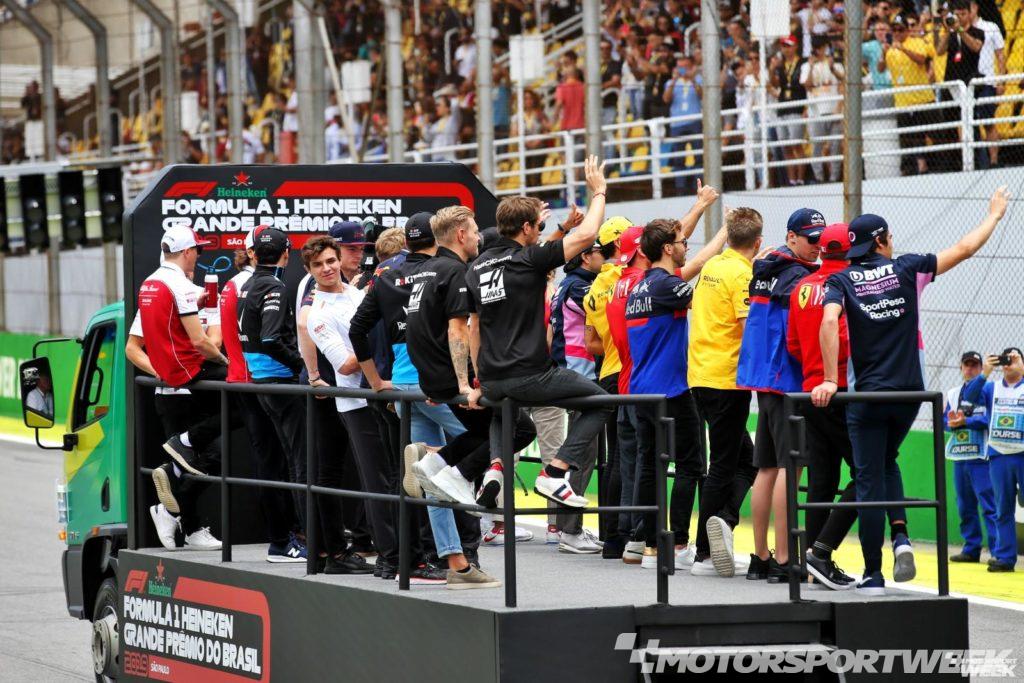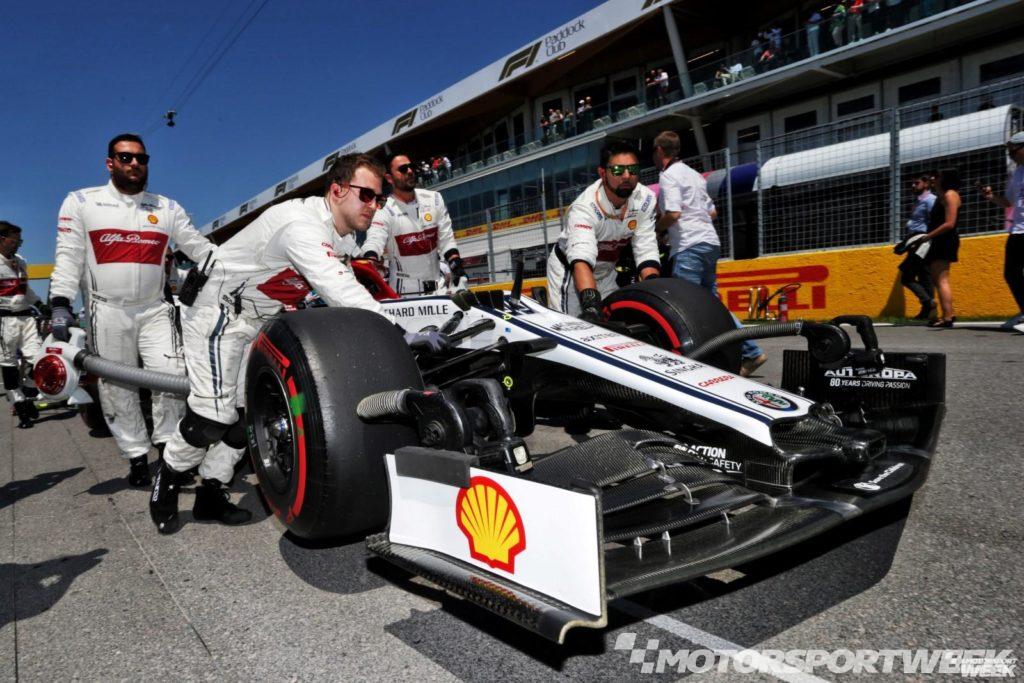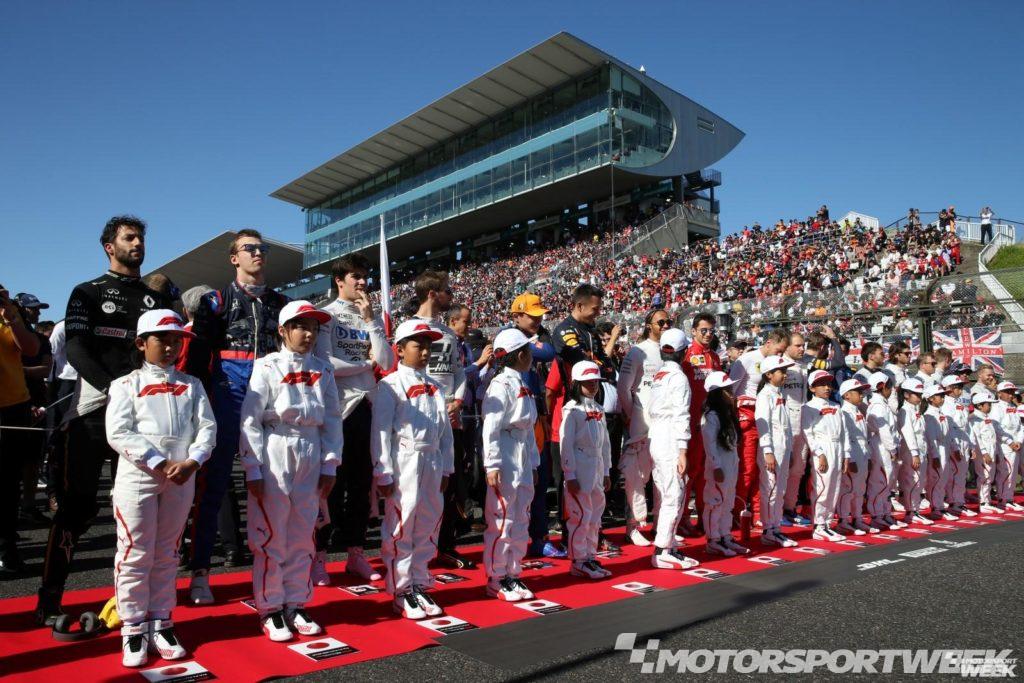Throughout the winter break Motorsport Week will be providing insight into the various workings of the Formula 1 world. Today we take a brief look at the typical build-up to a Formula 1 race start.
Using a standard European race weekend timing as a basis
Through the morning – Drivers will arrive at the circuit in dribs and drabs, most having had breakfast at the hotel, along with a gym session or run through the nearby scenery. Depending on the team in question some may have marketing activities or fan sessions, though these are often kept to a minimum in the build-up on race day. Drivers will also attend a pre-race strategy briefing with senior team members as the various scenarios are planned and discussed. Some will keep an eye on the Formula 2 and Formula 3 races.
13:30 – With the support events having finished the 20 drivers, plus their press officer and/or social media representative, gather in the FIA garage. Also present are the grid kids, who swarm around the drivers like bees, seeking autographs and photos, while eventually the drivers walk to either the FIA parade truck or individual classic cars. Typically drivers have already eaten before the parade but are frequently spotted glued to their drinks bottle in order to retain and build up hydration.
13:45 – The drivers’ parade typically lasts 15 to 20 minutes, after which they will return to their motorhomes/rooms for final preparations. This will involve warming up, getting changed, getting into the zone either through relaxation (some may nap) or getting hyped up by listening to music. It’ll often be a rare moment of quiet time for a driver at a Grand Prix weekend, away from spectators, other team members, media and VIPs.

14:00 – 14:30 – Many broadcasters will come on air around an hour before the race start, meaning the gradually-busying paddock becomes festooned with TV crews, all giving insight and pre-race thoughts while trying to grab senior team figures and the like. VIPs are often sauntering around and will eventually make their way from the paddock to the dummy grid. Frequently during this time, or even before, a pre-grid ceremony – involving dancers or figures depicting local customs – takes place. The most elaborate one occurs in Mexico, where an army of performers put on a spectacularly colourful show that winds its way through the Foro Sol Stadium and along the pit straight.
14:30 – The pit lane opens. All drivers are permitted to leave the pit lane for their reconnaissance lap (or laps, should they wish to complete multiple laps). Practice starts will be undertaken in order to find the right settings for the actual start, with the laps vital for both driver and engineer to understand elements such as grip levels, wind direction and any other nuances that may be different compared to qualifying. Once their final reconnaissance lap has been completed drivers must switch off their engine as they reach the rear of the grid, where awaiting mechanics will place the car on a tray and wheel it to the relevant grid position, all while ensuring vital components – most notably brakes – are kept cool, with an array of devices attached to the cars. TV/radio crews by now are present on the grid in a bid to interview drivers, senior team members or any other VIPs milling around, while photographers with relevant access will also be trying to capture oft-hidden angles or take contractual shots before making their way to their spot for the start.
14:38 – A signal is given to indicate the pit lane will close in two minutes

14:40 – Pit lane closed. Any driver who is not out on track will no longer be able to take up their grid position and must start from the end of the pit lane. Some drivers leave their cars on the grid and return to the paddock for a final toilet break, others crouch by the pit wall or barriers to listen to music, get in the zone, or oblige requests from TV and radio crews.
14:54 – National Anthem. All drivers must be present at the front of the grid, behind grid kids, for the anthem of the respective country in which the Grand Prix is taking place. In recent years the relevant VIPs and senior figures stand ahead of the drivers, while the trophies are put on a plinth.
14:55 – Fly-past. This is not mandatory nor does it happen at every event but typically a country’s aerobatic organisation carries out a fly-past once the anthem has been completed.
15:00 – A signal is given to indicate 10 minutes to go. Everyone except drivers, officials – such as FIA representatives – and team personnel must leave the grid. This includes TV/radio reporters, media, VIPs (unless specifically permitted to remain), sponsors and grid kids.
15:05 – A signal is given to indicate 5 minutes to go. For TV viewers this is typically when their broadcast crew link up with the World Feed, indicated by the start of the F1 theme tune.

15:07 – A signal is given to indicate 3 minutes to go. All wheels must be fitted to each car, with a penalty (usually a drive-through) handed out if this does not happen.
15:09 – A signal is given to indicate one minute to go. Engines should be started and all team personnel must ensure they are clear of their cars, and to the side or clear of the grid, across the next 45 seconds.
15:09:45 – A signal is given to indicate 15 seconds to go. Only the cars, and drivers, should still be on the main section of the grid. If any team personnel are still working on the car, or if any team equipment is left on the grid, then a penalty will be forthcoming.
15:10:00 – The green lights are illuminated on the pit gantry to signal the start of the formation lap. All drivers must circulate in grid order; if anyone stalls, and the entire field passes, then they must start from the rear of the pack.










Discussion about this post